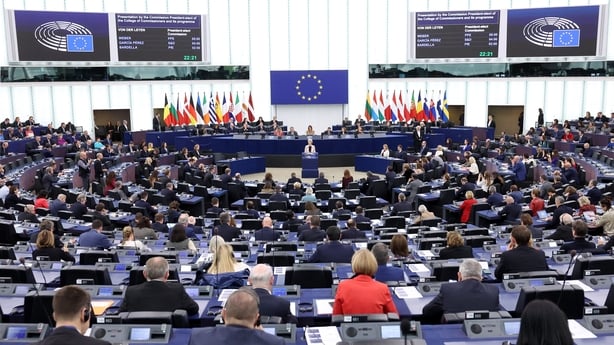Global Breast Cancer cases Projected to Surge by 2050
Table of Contents
- 1. Global Breast Cancer cases Projected to Surge by 2050
- 2. U.S. Breast Cancer Projections: A Closer Look
- 3. Understanding Risk Factors
- 4. The Disparities in Breast Cancer Outcomes
- 5. Geographic Disparities
- 6. Socioeconomic Disparities
- 7. progress and Persistent Challenges in Mortality Reduction
- 8. Countries Meeting WHO Targets
- 9. Countries with Rising Mortality
- 10. The Imperative for Improved Data Collection
- 11. Key Takeaways and Call to Action
- 12. What factors are driving the projected increase in breast cancer cases and deaths globally, and what can be done to mitigate this trend?
A concerning trend is emerging in breast cancer statistics worldwide. International scientists project a significant increase in breast cancer cases and deaths over the next 25 years.Cases are expected to rise by 38%, while deaths are projected to increase by a staggering 68%. This data underscores the urgent need for proactive measures and improved healthcare access globally. The World Health Organization (WHO) is actively working on strategies to combat this rise, emphasizing the importance of early detection and comprehensive treatment.
The rise in cases is attributed to various factors, including:
- Aging populations
- Lifestyle choices
- Limited access to screening in developing nations
U.S. Breast Cancer Projections: A Closer Look
Within the United States, the projections paint a similar picture. If current trends persist, breast cancer cases are expected to climb from approximately 275,000 in 2022 to over 350,000 by 2050. The number of deaths is also forecast to increase, rising from nearly 43,000 to almost 64,000 during the same period.
Understanding Risk Factors
Several factors contribute to an individual’s risk of developing breast cancer. According to research, these risk factors include:
- Age: The risk of breast cancer increases with age.
- family history: A family history of breast cancer elevates risk.
- Inherited genetic faults: Certain genetic mutations increase susceptibility.
- Lifestyle factors: Alcohol intake and physical activity levels play a role.
The Disparities in Breast Cancer Outcomes
Drastic inequalities exist in breast cancer outcomes across different regions and socioeconomic groups. The International Agency for Research on Cancer (IARC), affiliated with the World Health Organization (WHO), estimates that by 2050, there will be approximately 3.2 million new breast cancer cases and 1.1 million deaths annually. sadly, lower-income countries are disproportionately affected.
Geographic Disparities
While Australia, New Zealand, Northern Europe, and Northern America currently exhibit the highest rates of breast cancer diagnoses, Melanesia, Polynesia, and Western Africa face the highest mortality rates.
Socioeconomic Disparities
More than half (56%) of women diagnosed with breast cancer in the least developed countries die from the disease, compared to only about 17% in the most developed countries.This disparity is largely attributed to earlier diagnoses, better access to screening programs, and more comprehensive breast cancer management in wealthier nations.
Even within high-income countries,individuals from lower socioeconomic backgrounds often face poorer breast cancer outcomes compared to their wealthier counterparts.
dr. Joanne Kim, an IARC scientist and co-author of a key report, emphasized the gravity of the situation, stating, “every minute, four women are diagnosed with breast cancer worldwide and one woman dies from the disease, and these statistics are worsening.” This highlights the critical need for increased awareness and intervention.
progress and Persistent Challenges in Mortality Reduction
While overall numbers of cases and fatalities are rising, some progress has been made in reducing breast cancer mortality rates. Between 2008 and 2017, the proportion of people dying from breast cancer decreased in 30 out of 46 countries with high-quality data. Though, this progress is not occurring rapidly enough.
Countries Meeting WHO Targets
Only seven countries achieved the WHO’s breast cancer mortality reduction target of 2.5% per year during the specified period: Malta, Belgium, Denmark, switzerland, lithuania, the Netherlands, and Slovenia.
Countries with Rising Mortality
Among the seven countries that experienced an increase in breast cancer mortality rates, four where classified as least developed according to the Human Advancement Index. This index considers factors such as education, life expectancy, and income.
The Imperative for Improved Data Collection
Researchers emphasize the critical need for enhanced cancer data recording in less developed countries. The absence of reliable data from many of these nations hindered their inclusion in the study,despite the anticipated increase in case numbers as life expectancy rises.
Dr. Isabelle Soerjomataram,Deputy Head of the Cancer Surveillance Branch at IARC,stressed the importance of data,stating,”This report highlights the urgent need for high-quality cancer data and accurate records of the number of new diagnoses and outcomes in countries with low and medium HDI.”
Dr.Soerjomataram further emphasized that “Continued progress in early diagnosis and improved access to treatment are essential to address the global gap in breast cancer and ensure that the goal of reducing suffering and death from breast cancer is achieved by all countries worldwide.”
Key Takeaways and Call to Action
The projected rise in breast cancer cases and deaths underscores the urgent need for global action. By focusing on early detection through regular screening, improving access to comprehensive treatment, and addressing socioeconomic disparities, we can work towards a future where fewer women are affected by this devastating disease. Support breast cancer research, advocate for improved healthcare policies, and encourage women to prioritize their breast health. Together, we can make a difference.
What factors are driving the projected increase in breast cancer cases and deaths globally, and what can be done to mitigate this trend?
We’re seeing a concerning trend in breast cancer statistics worldwide. Cases and deaths are projected to rise significantly over the next 25 years. This underscores the urgent need for proactive measures and improved healthcare access globally. — Dr. Emma Hartley, Breast Cancer Research Specialist Every minute, four women are diagnosed with breast cancer worldwide and one woman dies from the disease.This stark reality highlights the critical need for increased awareness and intervention. — Dr. Emma Hartley, Breast cancer Research Specialist Overview of Current Trends and Projections
Dr. Hartley:
Aging populations, lifestyle choices, and limited access to screening in developing nations are the primary drivers. Additionally, rising life expectancy in low- and middle-income countries contributes to the projected rise in cases.U.S. Projections: A Closer Look
Dr. Hartley:
In the U.S., if current trends persist, breast cancer cases are expected to climb from approximately 275,000 in 2022 to over 350,000 by 2050, with deaths rising from nearly 43,000 to almost 64,000. Early detection thru regular screening, complete treatment, and addressing lifestyle factors can help mitigate this rise.Disparities in Breast Cancer Outcomes
Dr. Hartley:
Lower-income countries and individuals from lower socioeconomic backgrounds bear a disproportionate burden.More than half of women diagnosed in the least developed countries die from the disease due to later diagnoses and limited access to treatment. Within high-income countries, wealthier individuals often fare better.
Progress and Persistent Challenges in Reducing Mortality
Dr. hartley:
The pace of progress is not sufficient, and we’re seeing increases in mortality rates in some countries, especially those with lower Human Progress Index (HDI) scores. Improved data collection, early diagnosis, and access to treatment are crucial to achieving the goal of reducing suffering and death from breast cancer globally.Connecting with Our Readers
Dr. Hartley:
“What can you do today to raise breast cancer awareness, support research, or advocate for improved healthcare policies in your community?”




